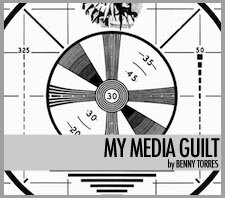The Inescapable Ad World: Street Artists Protest the Overabundance of Ads with More Ads
Posted by Alex Rivkin | August 1, 2012
Street art has become extremely popular and almost glorified. Its inherent rebelliousness and unrelenting challenge of authority are more often viewed as sexy and cool than criminal and destructive. With this growing support, street artists have become less cautious and clandestine. Instead, they are using their art to make large scale social statements.
This summer, 25 street artists from 8 different countries created perhaps the biggest, most impactful social campaign in street art history, the Brandalism Project. By artistically transforming billboards into anti-ads, this project challenges the authority of the advertising industry. While their art is visually enticing and attention-grabbing, their campaign is itself a contraction. By advertising against advertising, the Brandalism Project evinces the inescapability of the ad world.
The Brandalism group says the strict enforcement of branding regulations protecting Olympic sponsors has played a large role in provoking their reaction. These rules are so stringent that earlier this month the mother of an injured soldier was told she could not wear a charity-endorsed wristband while she ran the Torch Relay in Rochester, a town in Kent, England. The Brandalism Project seeks to reclaim the outdoor space taken over by ads.

Brandalism, meant to convey the idea that corporate ads are vandalism, is a term first invented by writer and graphic designer Sean Tejaratchi but later popularized by world-renowned graffiti artist, Banksy. According to Banksy,
Throughout the United Kingdom, the Brandalism artists did just that; they took over and completely altered 33 billboards, converting branded advertisements into anti-consumerism and anti-advertising visual messages. In a time when apathy usually prevails over activism, the artists’ passionate desire to take a stand is truly admirable. Not to mention, their art is awesome. However, I couldn’t help but think that their message is inherently contradictory.

They are critiquing society’s overabundance of ads by creating more ads. The only difference between their ads and the ads they’re challenging is content. Their ads contain a social message, and the ads they’re protesting contain a commercial message. However, at the end of the day, both sides are trying to increase consumption of what they’re selling. While commercial advertisers attempt to increase consumption of their products, these artists are attempting to increase consumption of their point of view and social stance. Similarly, like commercial advertisers, the Brandalism artists use ads to create a strong brand identity. After all, they have effectively branded themselves with the witty and intriguing title, “Brandalism.”
This is not meant to be a critique of the Brandlism Project, but rather to highlight the point that there is no way to have an ad-less society. Everyone wants to be heard. We are constantly going to be confronted with conflicting messages, choices, and points of view. We must accept the fact that we live in a consumer world. But we must not succumb to the idea that we are powerless beings subject to manipulation. As humans, we have agency. Though Banksy was right when he said we have no choice if we see advertisements or not, we can choose what to buy, what to like, and what to believe. We must exercise our decisive power. In the commercial sense, this power is our ability to choose what to buy, in the social sense, it’s our own political beliefs and social ideology. images via brandalism.org.uk
One Response to “The Inescapable Ad World: Street Artists Protest the Overabundance of Ads with More Ads”
Leave a Comment
RSS feed for comments on this post · TrackBack URI


[...] If advertising and infrastructure are mechanisms of predictability and uniformity, graffiti is a wrench. It sells nothing. It aligns itself with neither prices nor institutions. Its aims are undefined [...]